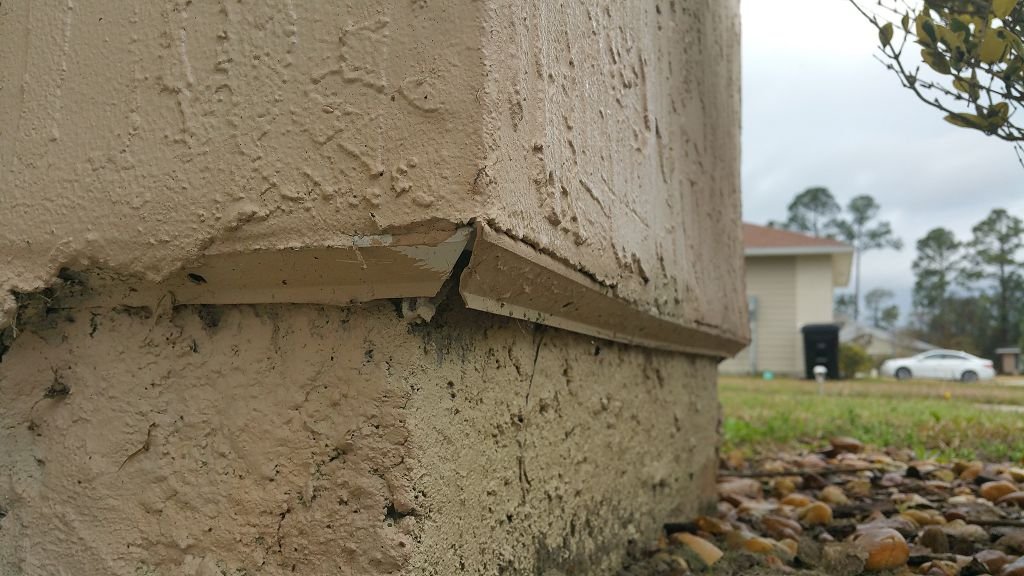Regarding building initiatives, ensuring proper moisture management isn’t just a recommendation—it’s a necessity. And one regularly-overlooked hero in this combat towards moisture damage? The humble weep screed! Whether renovating an older property, challenging a domestic-build mission, or ensuring compliance with industry requirements, weep screeds are essential in preserving structural integrity.
By the end of this blog, you’ll understand precisely what a weep screed is, how it works, and why it’s crucial in both new construction and renovations. Plus, we’ll share guidelines for installation, upkeep, and recognizing harm symptoms to keep your building initiatives moving quickly!
What Are Weep Screeds and Why Do They Matter?
Weep screeds are foundational additives that control moisture buildup in walls, especially in stucco and stone veneer structures. Typically made of galvanized metal or aluminum, a weep screed is installed at the base of outdoor walls. Its primary motive is to allow trapped moisture to escape while serving as a barrier to prevent water infiltration.
Moisture from rain, condensation, or humidity can penetrate porous exterior surfaces. Without a weep screed, this moisture may accumulate within the wall gadget, causing mold, timber rot, and structural damage over the years.
Here’s how a weep screed works:
- Moisture Drains Out: Weep holes in the screed allow water to escape from the wall cavity, guiding it downward and away from the building.
- Promotes Proper Ventilation: The gaps created for drainage additionally facilitate airflow, stopping further moisture buildup.
- Protective Barrier: Positioned at the wall’s base, it creates a pathway for moisture to go out, preserving water from seeping back into the shape.
Proper positioning and setup are key to maximizing the effectiveness of weep screeds. If installed too heavily or improperly sealed, they will not do their job, leaving your building vulnerable.
The Role of Weep Screeds in Renovation Projects
Renovating an older building? Weep screeds are your mystery weapon for upgrading its durability and moisture resistance! Many older houses and workplaces weren’t initially constructed with current moisture-management structures in the area. Over time, this will cause damage, including peeling stucco, warped framing, or chronic indoor dampness.
Here’s where weep screeds shine:
- Retrofitting for Better Resilience: Installing a weep screed during renovations provides an essential layer of safety that extends the building’s lifespan.
- Addressing Common Issues: Renovators frequently discover outdated wall systems or blocked drainage factors at some point of inspection. Weep screeds resolve such troubles by enhancing drainage and ventilation.
- Saving on Costs Long-Term: By preventing future moisture damage, weep screeds save you—and your clients—money on luxurious repairs or replacements later.
Don’t bypass this essential step if you’re undertaking a renovation assignment. It’s an upgrade, well worth each penny.
Weep Screeds in New Construction
Weep screeds are non-negotiable for new production projects. Most modern-day building codes mandate their inclusion in stucco and veneer siding systems, ensuring moisture control is built into the shape’s inspiration.
Here’s why they’re crucial:
- Seamless Integration: Weep screeds work together with other moisture defenses, such as climate barriers and flashing, when included from the start.
- Compliance Made Easy: Adhering to building codes isn’t elective, specifically while inspectors are concerned. A nicely mounted weep screed guarantees your mission meets local guidelines.
- Added Value: Builders who emphasize long-term sturdiness and occasional upkeep solutions, like weep screeds, earn clients’ approval and repeat business.
Don’t neglect to align installation with local weather concerns. Areas with heavy rainfall or excessive humidity may require additional reinforcements, such as extended drainage paths or excellent airflow capabilities.
Signs of Weep Screed Damage
With so much driving on this small thing, it’s vital to identify capability problems early. Here are some commonplace indicators of weep screed damage:
- Blocked or Clogged Weep Holes: Dirt, particles, or plant booms can obstruct the weep holes, stopping proper drainage.
- Rust or Corrosion: Over time, publicity to moisture and weather can degrade steel weep screeds, compromising their effectiveness.
- Stucco Cracks Near the Base: Cracked stucco around the weep screed may suggest trapped moisture or mistaken installation.
- Visible Water Stains: Discoloration or staining at the wall base can also indicate that moisture isn’t draining correctly.
- Detached or Misaligned Screeds: Screeds that have come unfastened or shifted out of function will need immediate interest.
Ignoring these symptoms can lead to excessive effects, mold growth, compromised framing, or the eventual failure of the wall machine. Regular preservation and inspections are essential.
Installation and Maintenance Tips for Long-Lasting Effectiveness
Whether you’re managing weep screeds for the primary time or are trying to brush up on satisfactory practices, those pointers will help:
Installation Guidelines
- Follow manufacturer instructions: Use the proper materials and tools specific to the producer for the right health.
- Position Properly: Install weep screeds at the bottom of the wall machine, ensuring they sit slightly off the foundation to prevent blockages.
- Seal Joints Carefully: Use weatherproof sealants to close gaps or seams, making sure water doesn’t sneak beyond the screed.
- Pair with a Moisture Barrier: Combine a weep screed with other additives, like flashing and house wrap, for comprehensive moisture protection.
Maintenance Best Practices
- Regular Inspections: Incorporate visual inspections into your private home or constructing protection to spot issues early.
- Clear Obstructions: Remove blockages from weep holes directly. A gentle brush or pressurized air can assist.
- Rust Treatment: Apply rust-inhibiting paint or remedies to metal weep screeds as preventive care.
- Repair Damage Quickly: If you notice rust, misalignment, or other damage, cope with the hassle sooner rather than later to avoid substantial moisture problems.
With interest in detail and care, weep screeds can dramatically enhance the lifespan and durability of your building venture.
Your Building’s First Line of Defense
Weep screeds can be small, but their impact on a building’s fitness and lifespan is enormous. From renovating historic properties to constructing modern-day houses, they provide essential protection against the wear and tear of moisture damage.
Are you looking to install or maintain weep screeds on your next project? Please speak to our team of professionals for expert guidance and solutions tailored to your unique wishes. Contact us today, and make sure your building is built to last!

